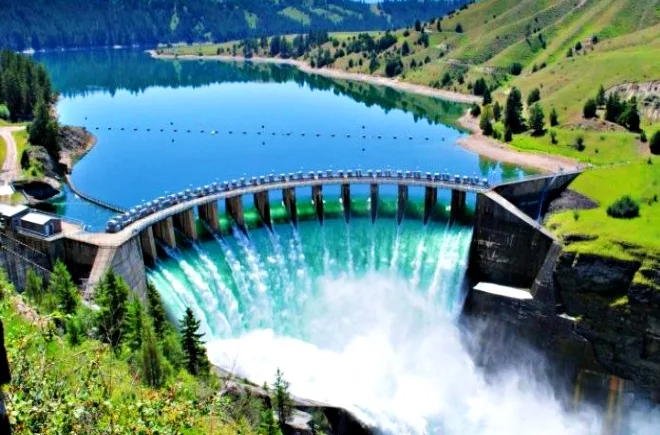Hydroelectric energy, also called hydroelectricity or hydropower, is a form of energy that uses the power of flowing water to generate electricity.
There are three main types of hydroelectric energy: impoundment, diversion, and pumped storage.
There are 4 broad hydropower plants: (1) run-of-river hydropower, (2) storage hydropower, (3) pumped-storage hydropower, (4) offshore hydropower.
 |
| There are three main types of hydroelectric energy: impoundment, diversion, and pumped storage. |
What are the Four Major Types of Hydropower Plants?
Types of Hydropower
Hydropower is divided into two main types depending on the method used to produce electric energy from water.
The first type of hydroelectric power production is based on power plants that rely on watersheds from places where they benefit from the power of falling water from uplands, so dams are created in all major river streams to facilitate the process of controlling and storing water on demand from electricity.
The second type is the production of hydropower, which is used to produce electricity from flowing water in rivers.
The energy produced from the use of the flow of river water is much less than the electricity produced from the use of high watersheds.
The first type, which is the use of high-altitude projects has a great advantage distinguishes it from the other type in the possibility of controlling the hydroelectric power produced by the electric power plant.
Dams allow water to be stored in reservoirs above ground level, making them suitable for producing electric power when needed.
The most widely used type worldwide is, therefore, the first type, which is the use of high watersheds and the dependence on dams.
Types of Hydropower Plants
Hydropower is the power derived from the power of mobile water, which is widely used to produce electricity, among other useful purposes.
Hydropower is versatile energy and flexible technology. In terms of generating capacity, water accounts for eight of the world's top dozen power plants.
There are four broad types of hydropower plants:
Run of the river hydroelectricity (ROR):
Run of the river hydroelectricity includes any facility water channels flowing from the river through the canal. The operating project from the river is usually followed by little or no storage facility.
The movement of the river provides a constant supply of electricity (primary load), with some flexibility in the operations of daily fluctuations in demand through the flow of water regulated by the facility.
This extensive system is usually followed in the use of the dam to store water in the reservoir.
Electricity is produced by releasing water from the tank through a turbine that activates the generator.
It provides hydropower storage for the basic load as well as shutdown capability to start up in a short time according to system requirements (peak load).
It can provide sufficient storage capacity to operate independently by hydrological flow for several weeks or even months.
This extensive system is usually followed in the use of the dam to store water in the reservoir.
Electricity is produced by releasing water from the tank through a turbine that activates the generator.
It provides hydropower storage for the basic load as well as shutdown capability to start up in a short time according to system requirements (peak load).
It can provide sufficient storage capacity to operate independently by hydrological flow for several weeks or even months.
Pumped-storage hydroelectricity:
Pumped-storage hydroelectricity supplies by harnessing the water that flows between the lower and upper reservoir of pumps used by excess capacity from the system in times of low demand.
When the demand for electricity is high, water is released to the bottom tank through the turbine to produce electricity.
Offshore hydropower:
Marine renewable energy (MRE) or Offshore hydropower is the least well-established but growing set of technologies used for tidal currents or wave power to generate electricity from seawater.
These technologies can often overlap. For example, storage projects can involve an element of pumping to supplement the water flowing into the natural reservoir, and operating from the river to provide projects for some storage capacity.
Tags
hydroelectric energy
Hydroelectricity
hydropower
hydropower plants
renewable energy
renewable resources
technology
